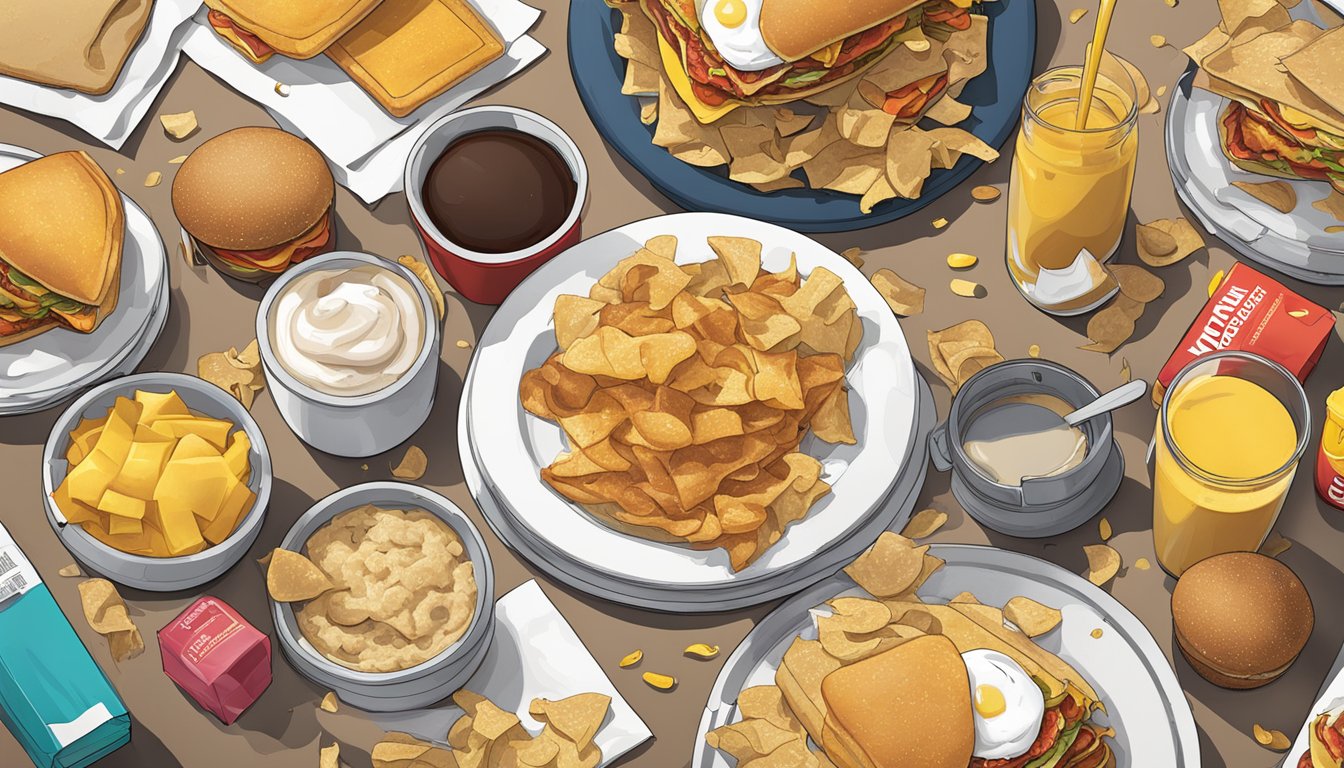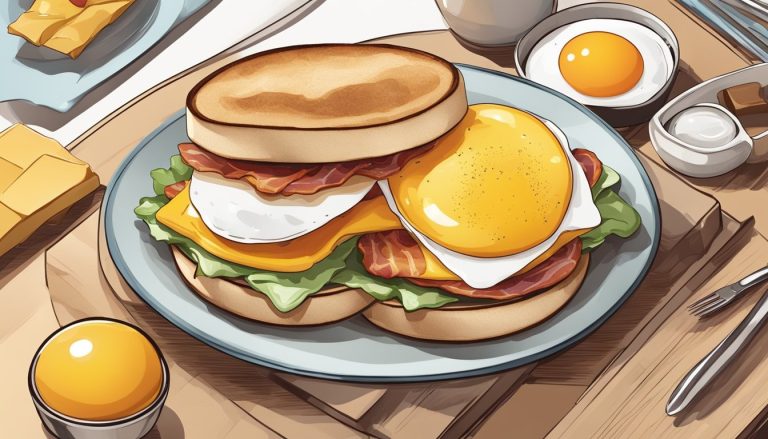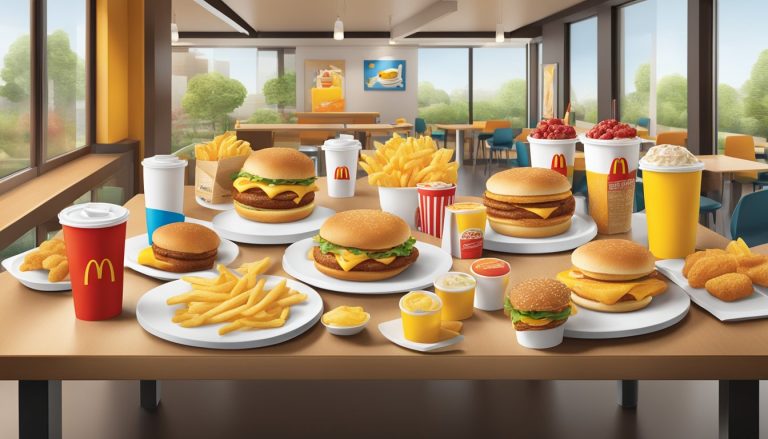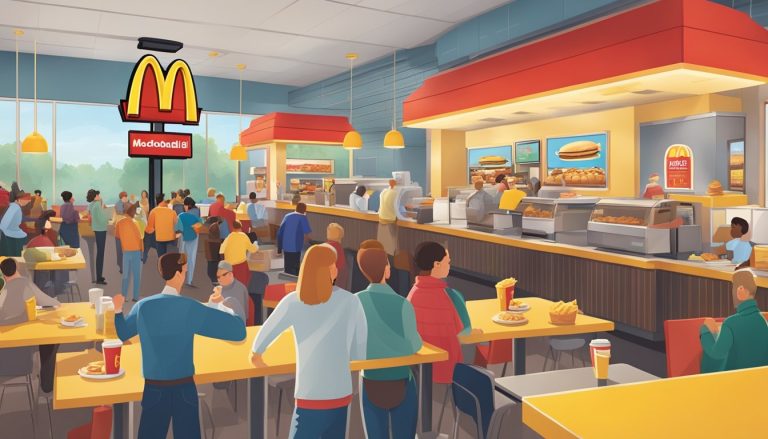McDonald’s has long been a breakfast staple for many, offering a variety of morning menu items to start the day. While classics like the Egg McMuffin have stood the test of time, not every breakfast innovation has been a success. The fast food giant has introduced numerous breakfast items over the years that failed to resonate with customers.
Some McDonald’s breakfast items were discontinued due to poor sales, negative customer feedback, or operational challenges. These unsuccessful menu offerings provide insight into consumer preferences and the challenges of innovating within the fast food breakfast market. From unique twists on breakfast staples to attempts at healthier options, McDonald’s has seen its share of breakfast menu failures.
1) McHotDog

McDonald’s attempt to introduce hot dogs to its breakfast menu proved to be a notable misstep. The McHotDog was tested in select markets during the 1990s but failed to gain traction with customers.
Despite hot dogs being a popular American food, they didn’t align well with McDonald’s established brand identity. Consumers typically associated the fast-food chain with burgers and fries, not hot dogs.
Quality concerns also plagued the McHotDog. Many customers found the taste underwhelming compared to traditional hot dog vendors. The product struggled to meet the flavor expectations set by specialized hot dog establishments.
Operational challenges further hindered the McHotDog’s success. The item required different cooking equipment and preparation methods, which disrupted the efficient kitchen flow McDonald’s was known for.
Ultimately, the McHotDog was discontinued due to poor sales and lack of customer interest. This failure demonstrated the difficulty of introducing products that deviate too far from a brand’s core offerings.
2) Onion Nuggets

McDonald’s introduced Onion Nuggets in 1978 as a unique side dish option. These crispy, golden nuggets were made from chunks of onion that were battered and deep-fried.
Despite their intriguing concept, Onion Nuggets only lasted for about a year on the menu. They were discontinued in 1979, failing to capture widespread customer interest.
Interestingly, the short-lived Onion Nuggets played a role in the creation of one of McDonald’s most successful items. The cooking process developed for these nuggets was later adapted for the iconic Chicken McNuggets.
While Onion Nuggets didn’t succeed, they paved the way for the immensely popular Chicken McNuggets, which were introduced in 1983. This demonstrates how even failed menu items can contribute to future innovations.
Today, Onion Nuggets remain a curious footnote in McDonald’s history. They serve as an example of the chain’s willingness to experiment with unconventional menu offerings, even if not all of them find long-term success.
3) McDLT

The McDLT was McDonald’s attempt to innovate burger packaging in the mid-1980s. This unique offering featured a novel approach to keeping ingredients fresh and separate until consumption.
The sandwich came in a specially designed Styrofoam container with two compartments. One side held the hot components – the beef patty and bottom bun. The other contained the cool elements – lettuce, tomato, cheese, and top bun.
This packaging aimed to prevent the hot patty from wilting the lettuce and warming the tomato. Customers were meant to assemble the burger themselves, combining the hot and cold sides just before eating.
Despite its clever concept, the McDLT faced several challenges. The large Styrofoam container was environmentally unfriendly, leading to criticism. Additionally, the assembly process was more complicated than typical fast food items.
The McDLT ultimately failed to capture long-term customer interest. McDonald’s discontinued the product in the early 1990s, marking it as one of their less successful menu innovations.
4) McPizza
McDonald’s introduced McPizza in the late 1980s as an attempt to expand its menu offerings beyond traditional fast food items. The company hoped to capture a slice of the lucrative pizza market and compete with popular pizza chains.
McPizza was available in several varieties, including cheese, pepperoni, and deluxe. The individual-sized pizzas were made to order and baked in special ovens installed in participating McDonald’s locations.
Despite initial excitement, McPizza faced significant challenges. The preparation time for pizzas was much longer than for burgers and fries, contradicting McDonald’s reputation for quick service. This led to longer wait times and frustrated customers.
The product also required substantial kitchen modifications and additional equipment, making it costly for franchisees to implement. Many locations opted not to offer McPizza due to these logistical challenges.
By the mid-1990s, McDonald’s began phasing out McPizza from most of its restaurants. The company realized that customers primarily associated McDonald’s with burgers and fries, not pizza. The experiment ultimately proved unsuccessful, and McPizza became one of the chain’s most notable menu failures.
5) Hula Burger

The Hula Burger stands out as one of McDonald’s earliest menu failures. Introduced in the 1960s, this unique creation was the brainchild of McDonald’s franchise owner Ray Kroc.
Kroc developed the Hula Burger in response to declining sales in areas with large Catholic populations. He aimed to provide a meatless option for customers observing the practice of abstaining from meat on Fridays.
The Hula Burger consisted of a slice of grilled pineapple and cheese on a bun. Despite its innovative approach, the burger failed to resonate with customers and was quickly discontinued.
At the same time, McDonald’s introduced the Filet-O-Fish, which proved far more popular among consumers seeking a meatless option. The success of the Filet-O-Fish ultimately led to the demise of the Hula Burger.
The Hula Burger’s failure demonstrates the importance of market research and understanding customer preferences. While creative, the combination of pineapple and cheese simply did not appeal to McDonald’s target audience.
6) McLobster

The McLobster made its debut on McDonald’s menu in 1993. This seafood offering aimed to bring a taste of luxury to the fast-food chain’s lineup.
The sandwich consisted of lobster meat and lettuce in a hot dog-style bun. It was topped with a special “lobster sauce” to enhance the flavor.
Despite its ambitious concept, the McLobster faced several challenges. The high price point of $5.99 deterred many customers who were accustomed to McDonald’s more affordable options.
Quality concerns also plagued the item. Many customers reported that the lettuce often outweighed the lobster meat, leading to disappointment.
The McLobster’s availability was limited to select coastal areas where lobster was more readily accessible. This restricted its potential for widespread success.
Ultimately, the McLobster failed to gain traction with McDonald’s customer base. It was discontinued from most locations, though it occasionally reappears as a limited-time regional offering in some maritime areas.
7) Arch Deluxe

The Arch Deluxe was McDonald’s attempt to appeal to adult customers in 1996. This burger featured a quarter-pound beef patty, peppered bacon, lettuce, tomato, and a special mustard-mayonnaise sauce on a bakery-style roll.
McDonald’s invested heavily in the Arch Deluxe’s launch, spending $200 million on advertising. This was an unprecedented amount for a fast food product introduction at the time.
The marketing campaign aimed to position the Arch Deluxe as a sophisticated option. Advertisements showed Ronald McDonald engaging in adult activities like golf and billiards.
Some commercials even depicted children being disgusted by the burger, emphasizing its mature flavor profile. Unfortunately, this strategy backfired and failed to resonate with consumers.
Despite the extensive promotion, the Arch Deluxe did not meet sales expectations. Customers were not enticed by the “grown-up” burger concept, and the product was eventually discontinued.
The Arch Deluxe is often cited as one of McDonald’s most expensive failures. It serves as a cautionary tale in the fast food industry about the risks of straying too far from a brand’s core identity and target audience.
8) McSpaghetti

McSpaghetti was an unusual breakfast item introduced by McDonald’s in the early 1970s. This unexpected menu addition featured spaghetti noodles topped with tomato sauce, meatballs, and cheese.
The fast-food chain attempted to diversify its offerings by venturing into Italian cuisine. McSpaghetti was part of a broader initiative that included other Italian-inspired dishes like lasagna and fettuccine alfredo.
Despite McDonald’s efforts, McSpaghetti failed to resonate with American customers. The item was discontinued in most U.S. markets by 1980, marking a relatively short lifespan for the pasta dish.
Interestingly, while McSpaghetti disappeared from American menus, it found success in some international markets. The item remains available in certain McDonald’s locations abroad, particularly in the Philippines.
The failure of McSpaghetti in the U.S. highlighted the challenges fast-food chains face when attempting to expand beyond their core offerings. It demonstrated that customers primarily associated McDonald’s with burgers and fries, not pasta dishes.
9) McStuffins

McStuffins were an ambitious attempt by McDonald’s to expand their breakfast menu in the mid-1990s. These stuffed breakfast pastries aimed to provide a portable, handheld option for on-the-go customers.
The concept featured a flaky pastry crust filled with various breakfast ingredients like eggs, cheese, and meat. McDonald’s offered flavors such as ham and cheese, as well as sausage and egg.
Despite the initial excitement surrounding McStuffins, they failed to gain traction with customers. The product faced criticism for its inconsistent quality and flavor profile.
Many customers found the pastry to be either too dry or too greasy, depending on preparation. The fillings often lacked the expected taste and texture associated with McDonald’s breakfast items.
McStuffins also struggled to compete with established breakfast options like the Egg McMuffin and hotcakes. The new product’s higher price point and unfamiliar format contributed to its lackluster performance.
After a brief test run in select markets, McDonald’s quietly discontinued McStuffins. The failure of this breakfast item demonstrated the challenges of introducing novel concepts to a well-established menu.
10) Mighty Wings

McDonald’s Mighty Wings were a bold attempt to enter the chicken wing market. Introduced in the 1990s and revived in 2013, these bone-in chicken wings aimed to diversify the fast-food giant’s menu.
Despite their crispy exterior and spicy flavor, Mighty Wings failed to win over customers. The primary issue was their high price point, which many found too expensive for a fast-food offering.
In 2013, a pack of three wings cost $3.19, while five wings were priced at $4.99. This pricing strategy put them at odds with McDonald’s value-focused image.
The wings also faced criticism for being too spicy for some customers’ tastes. This limited their appeal to a broader audience, further contributing to their poor performance.
McDonald’s ultimately discontinued Mighty Wings due to lackluster sales. The company was left with a surplus of unsold wings, forcing them to offer steep discounts to clear inventory.
The failure of Mighty Wings serves as a reminder that even established brands can struggle when venturing into new product categories. It highlights the importance of pricing and flavor profiles in fast-food menu development.
11) McAfrika

The McAfrika stands out as one of McDonald’s most controversial menu failures. Launched in Norway in 2002, this sandwich consisted of beef, cheese, tomatoes, and salad in a pita-like bread.
The timing of its release could not have been worse. It coincided with a severe famine in southern Africa, affecting millions of people. This unfortunate coincidence led to widespread criticism and backlash against McDonald’s.
Critics accused the company of insensitivity and poor judgment. The name “McAfrika” was seen as particularly tone-deaf given the dire situation unfolding on the African continent at the time.
McDonald’s quickly pulled the item from its menu following the public outcry. The company attempted to salvage the situation by placing donation boxes for charities working in Africa near its restaurants.
Despite its short-lived presence, the McAfrika remains a prime example of a marketing misstep in the fast food industry. It serves as a cautionary tale about the importance of cultural sensitivity and awareness in global marketing strategies.
Why Some McDonald’s Breakfast Items Fail
McDonald’s breakfast menu has seen its share of unsuccessful items over the years. Product failures often stem from a mismatch with consumer preferences or operational challenges in preparing and serving certain dishes.
Market Trends and Consumer Preferences
McDonald’s must stay attuned to shifting breakfast trends. Items that don’t align with current health concerns or taste preferences tend to falter. For example, overly indulgent options may struggle as more customers seek healthier choices.
Some breakfast items fail to resonate with McDonald’s core audience. The chain’s breakfast crowd often prioritizes convenience and familiarity. New products that are too complex or unfamiliar may not gain traction.
Timing also plays a crucial role. Launching breakfast items when consumer interest is low can lead to poor sales. McDonald’s needs to accurately gauge demand for new offerings.
Challenges with Ingredients and Flavors
Sourcing high-quality ingredients at scale can be difficult for certain breakfast items. Products requiring specialty ingredients may face supply chain issues or become too costly to produce profitably.
Flavor profiles that don’t match regional tastes often struggle. What’s popular in one market might not translate well to others. McDonald’s must carefully consider local preferences when introducing new breakfast options.
Some items fail due to inconsistent preparation across locations. Breakfast dishes that are challenging to make quickly or require special equipment may not meet McDonald’s standards for speed and consistency.
Balancing innovation with familiarity is key. Breakfast items that stray too far from McDonald’s established flavor palette risk alienating loyal customers.
The Role of Marketing and Branding
Marketing and branding play a crucial role in the success or failure of McDonald’s breakfast items. Effective campaigns can drive customer interest and sales, while missteps can lead to product flops. Consumer perceptions heavily influence reception of new menu offerings.
Impact of Advertising Strategies
McDonald’s utilizes various advertising tactics to promote its breakfast items. TV commercials, social media campaigns, and in-store promotions aim to generate buzz and attract customers. The iconic Golden Arches logo features prominently, leveraging brand recognition.
Some campaigns successfully highlight new products’ unique selling points. The “All Day Breakfast” initiative, for example, emphasized convenience and drove sales growth. Billboard and print ads often showcase appetizing food photography to entice viewers.
Digital marketing allows for targeted outreach to specific demographics. Geotargeted mobile ads can alert nearby customers to limited-time breakfast offers.
Consumer Perceptions and Expectations
Brand reputation significantly impacts how consumers view new McDonald’s breakfast items. The company’s image as a quick, affordable option sets certain expectations for menu additions.
Health-conscious customers may be skeptical of indulgent breakfast fare. This perception challenge contributed to the failure of some higher-calorie offerings.
Product names and descriptions shape expectations. Items perceived as too “fancy” or unfamiliar may struggle to resonate with McDonald’s core audience.
Consumer feedback on social media can quickly influence public opinion of new breakfast items. Negative reviews can spread rapidly, damaging a product’s chances of success.
Price point is another key factor. Breakfast items seen as overpriced compared to established menu staples often face rejection from value-seeking customers.




